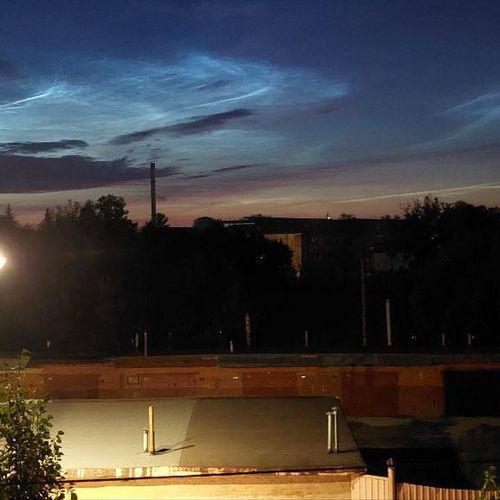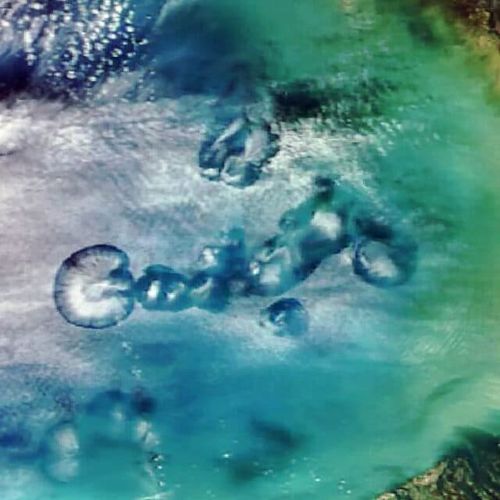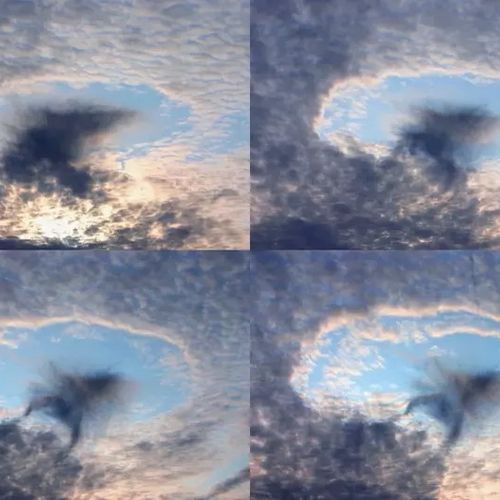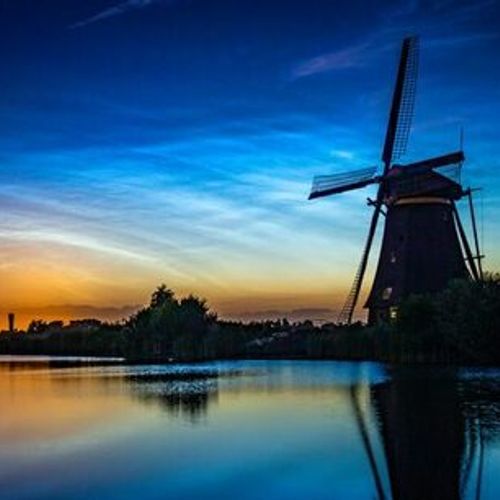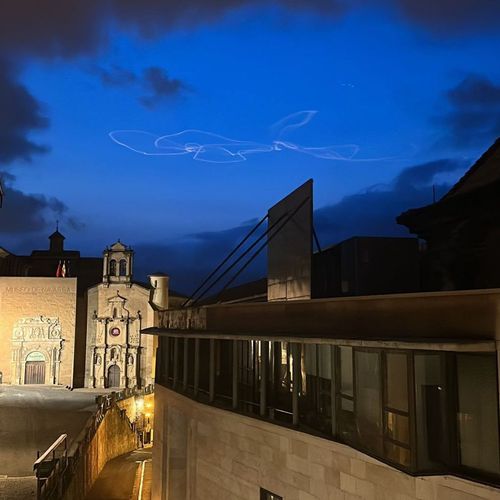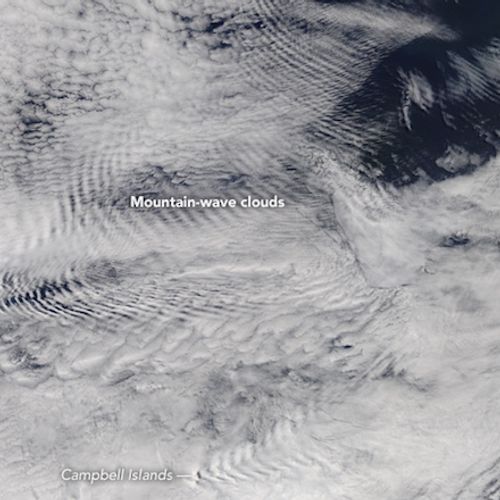
| Added | Tue, 19/12/2017 |
| Источники | |
| Дата публикации | Tue, 19/12/2017
|
| Версии |
When you next see a duck floating on smooth water, pay attention to a series of V-shaped waves which form an angle of 40 degrees. To describe this phenomenon, physicists use the term Kelvin wave, although widely extended to other names, such as head waves.
In the case of duck movement on the calm surface causes waves. A similar process can occur when air flows over a stationary object. This is what happened when the MODIS on the NASA satellite "Terra" this picture was taken cloud waves over the mountains near the Auckland Islands. Wave-like clouds float in an easterly direction on the leeward side of a small archipelago, about 450 kilometers South of the South island of New Zealand.
The island is known for its uneven terrain and some of the peaks, including mount Raynal, D'urville and Eston, have a height of over 600 metres. These peaks sticking out above the surface of the ocean, Islands broke the smooth flow of air and created atmospheric gravity waves and wave clouds.
The presence of clouds allows you to see waves. Cloud pattern reflects the location of wave crests and troughs. Wet cloud air over the ocean, which meteorologists call the marine layer, often covered with a layer of dry air. Clouds are formed or retained on the crests of the waves because air cools when it rises, and water vapor condenseries in the cloud droplets. In the wave troughs, dry air from above sinks into marine layer, replacing the cloudy air. As the air descends, it heats up and causes the clouds to evaporate.
Translated by «Yandex.Translator»
© NASA
Translated by «Yandex.Translator»
Новости со схожими версиями
Log in or register to post comments

